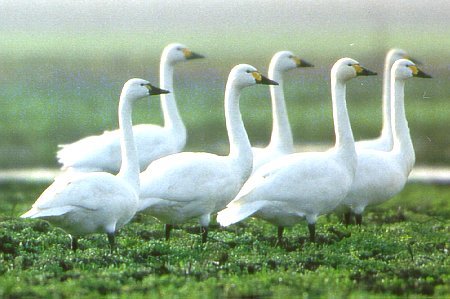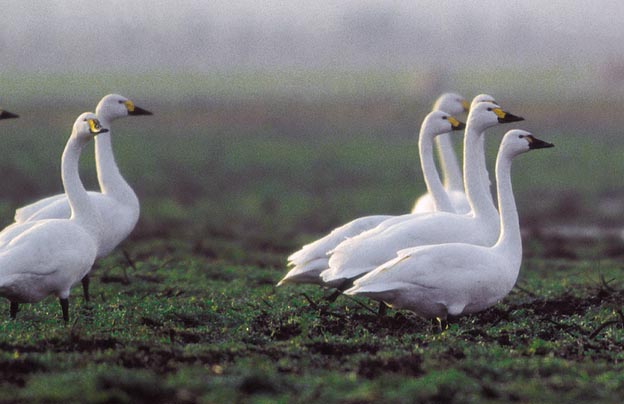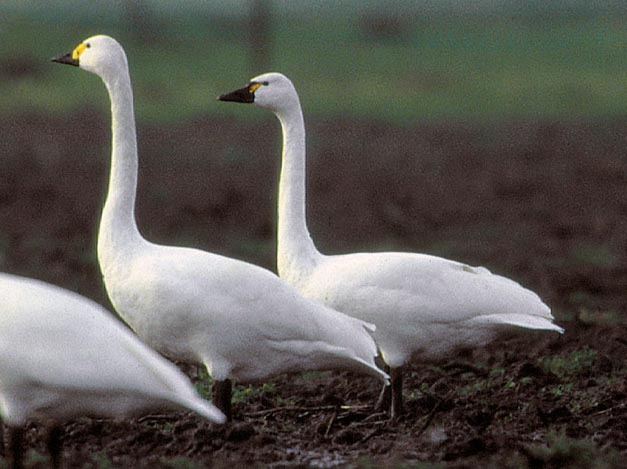Whistling Swan - Cygnus columbianus.
On Friday 28 November 1997 near Veendam (Groningen) Emo Klundert discovered a back-billed tundra swan, which he believed was a Whistling Swan Cygnus columbianus. He warned other birders, which observed the bird till dark and confirmed it was indeed a Whistling Swan, the American counterpart of Bewick's Swan Cygnus bewickii. The following days the bird was present along the Woortmanslaan, west of Wildervank, Veendam (Groningen) feeding on ploughed fields together with Bewick's Swans. In the late afternoon it would fly to the nearby Zuidlaarder Meer, a lake west of Veendam (where in 1994 a Great Spotted Cuckoo was seen), where it probably spent the night. The bird stayed till 8 February 1998 and could be observed by many birders. The percentage of yellow proved to be around 7,64% after analysis of photographs. This percentage falls safely into the range of Whistling Swans (0-15%) and outside the range of Bewick's Swans (22.9-42%).

November 1997, Veendam Gr; © Jan van Holten.

November 1997, Veendam Gr; © Jan van Holten.

November 1997, Veendam Gr; © Jan van Holten.
In the Netherlands we consider this taxon as full species (cf Dutch Birding 19 (1): 22, 1997). For an analysis of bill-patterns, consult Auk 97: 697-703, 1980). The first accepted record in the Netherlands was at Zonnemaire (Zeeland) on 15 February 1976 (cf Sterna 24: 77-78, 1980). The second to fourth were: 7-15 February 1980 Nijkerk (Gelderland) (cf Limosa 60: 40-41, 1987), 23 November 1986 Lauwersmeer (Groningen) (cf Dutch Birding 11: 118-119, 1989) and 9 December 1992 Eenrum (Groningen) (cf Dutch Birding 16 (4): 134, 1994). A bird at Almere in November 1990 was rejected, since this proved to be a border-line case (cf Dutch Birding 13: 39, 1991).
After review, based on the findings in this article, all records of Whistling Swan in the Netherlands were removed from the Dutch List.
Do you want to go to the main-index, the 1997-index or the next species, the White-tailed Plover?


